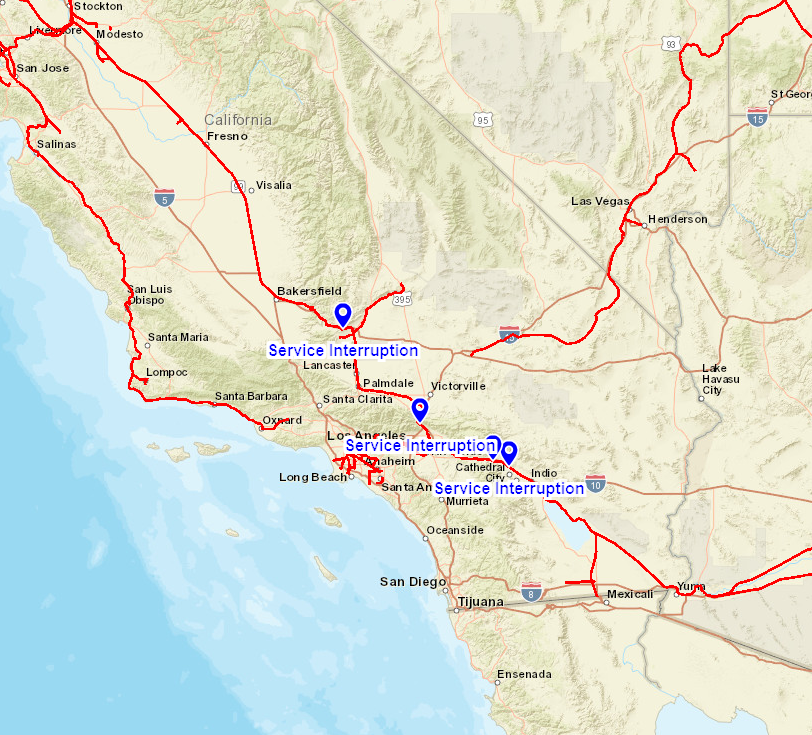Tropical Storm Hilary hit hard in the desert expanse between Los Angeles and Las Vegas. While sparsely populated, Hilary’s bullseye includes significant water, energy, and freight flows, including a major rail corridor connecting the Ports of LA/Long Beach with the rest of the United States.
On August 21 Union Pacific reported, “The Mojave and Yuma subdivisions are out of service due to water and mud over the tracks in the following California locations: Between Banning and Indio, Near Mojave, 10 miles north of Fontana (see map below). Widespread road and interstate closures are impacting our ability to transport crews to operate trains, and public electrical outages are impacting operations in some terminals. Once the storm passes and we are able to assess the status of our network in this area we will provide an update on estimated shipment delays” (more).
On August 22 Union Pacific reported, “Mud continues to flow back onto the tracks. Our Operating and Engineering teams are bringing in additional equipment to assist in clearing the track. There is a segment of double track that traverses a bridge that will need to be rebuilt…. Early estimates indicate the track may be out of service for approximately two weeks. Although we have returned service to some of the impacted segments, it will take multiple days to work through the backlog of trains. For safety purposes, these line segments will have temporary slow order speed restrictions placed upon them. We will also need to re-align locomotive power and crews to the region and customers should expect extended delays through the week.”
Also on Tuesday August 22, FreightWaves reported, “…normal rail flows stopped” after Sunday evening. The last loaded train to pass through the Loma Linda area was an eastbound mixed-manifest train with 109 cars, and it passed by at 8:39 p.m. PT… Ten days before the storm hit, the route saw an average of 31 trains, carrying a total of 3,600 carloads and 4,300 containers…” As this suggests, backlogs are accumulating quickly. On August 23 Union Pacific began restricting network access as far east as Chicago, Charlotte, and Atlanta in an effort to avoid total gridlock.
The potential for a high volume, high velocity node or channel to become a tangled chokepoint is an innate feature of most contemporary demand and supply networks. As this case suggests once flow is slowed or stopped at anyplace in the network there is a tendency for rapid congestion and related complications across the entire network, sometimes creating cascading impediments to recovery unless effectively mitigated. We see this again and again with airline networks, maritime flows, meat processing, and much, much more. Concentration is a key component of economies-of-scale that facilitate affordability and efficient, effective delivery to demand. But depending on context, what is usually a strength can suddenly become a serious weakness.
Map below shows UP system chokepoints on August 21 immediately following Hilary’s transit
